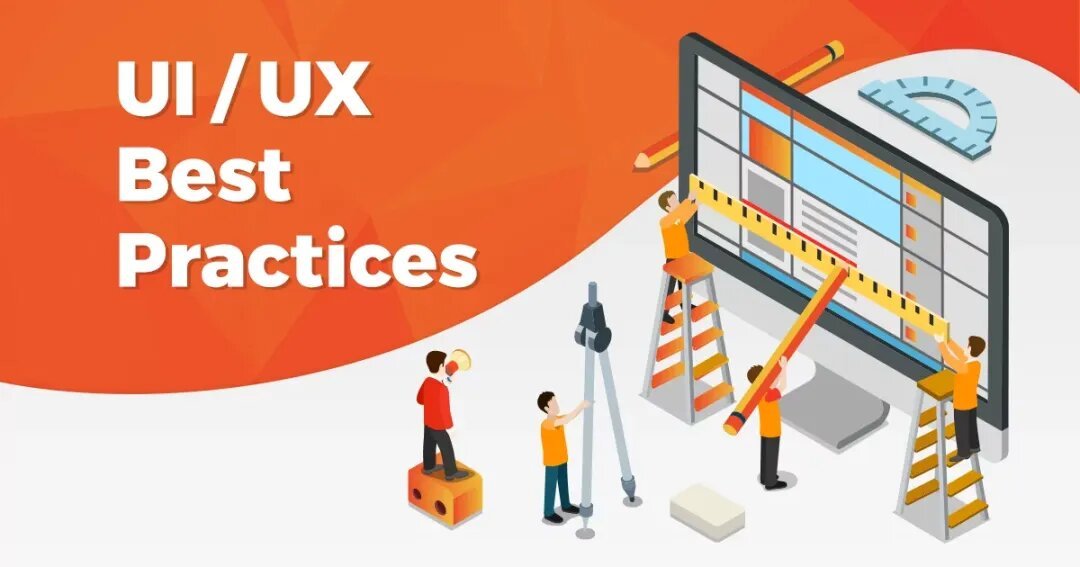Accessibility is key to reaching everyone online. At Red Star Technologies, we believe that every website should be usable by all, including people with disabilities. Creating accessible websites not only promotes inclusivity but also enhances the user experience for everyone. Moreover, it’s important for search engine optimization (SEO) and legal compliance with accessibility regulations.
This article covers the best UI/UX practices for building accessible websites. By following these tips, designers can ensure their sites are easy to use for everyone, regardless of ability.
Understanding Disabilities and User Needs
People experience the web in different ways, and not all users interact with a site in the same manner. Disabilities can impact how someone navigates and consumes content online.
- Visual Impairments: This includes blindness, low vision, and color blindness. These users may rely on screen readers to browse the web.
- Hearing Impairments: Users who are deaf or hard of hearing need captions or transcripts for any audio or video content.
- Motor Disabilities: Some users have difficulty using a mouse or touchpad and may rely on keyboard navigation or voice commands.
- Cognitive Disabilities: This includes users with learning difficulties or attention disorders who benefit from simple, clear design and logical layouts.
Additionally, assistive technologies like screen readers, braille displays, and voice navigation tools help people with disabilities access web content. Understanding these needs is critical for creating inclusive websites.
Best UI/UX Practices for Accessibility
Making websites accessible involves a combination of thoughtful design and technical considerations.
Text and Typography
Readable Fonts: Use simple, easy-to-read fonts like Arial or Verdana.
Text Size and Resizing: Users should be able to enlarge text without breaking the layout.
Contrast Ratios: Ensure a strong contrast between text and background for better readability.
Color and Visual Design
Avoid Relying Solely on Color: Don’t use only color to convey important information. For example, underlining or bolding can highlight links or warnings.
Colorblind-Friendly Design: Consider how different colors appear to colorblind users. Tools like contrast checkers can help ensure your color choices work for everyone.
Navigation and Layout
Keyboard-Friendly Navigation: Every interactive element, like buttons or links, should be accessible using the keyboard alone. Test with the Tab key to ensure ease of navigation.
Logical Content Structure: Use clear headings, lists, and a consistent layout to help users navigate easily.
Breadcrumbs and Site Maps: These additional navigation aids help users find their way around complex websites.
Forms and Input Elements
Labeling: Properly label all form elements like input fields and buttons. This is essential for screen reader users.
Error Messages: Provide clear and helpful error messages. Let users know what went wrong and how they can fix it.
Field Instructions: Include tooltips or placeholders to guide users through filling out forms correctly.
Images, Videos, and Media
Alt Text for Images: Every image should have descriptive alt text. This allows screen readers to describe the image to users who cannot see it.
Closed Captions and Transcripts: Provide captions for all videos and transcripts for audio content. This helps users who are deaf or hard of hearing.
Media Control Accessibility: Ensure that audio and video players are easy to control with a keyboard or screen reader.
Interactive Elements (Buttons, Links, Menus)
Descriptive Links and Buttons: Use clear and meaningful labels like “Download Report” instead of vague text like “Click Here.”
Focus Indicators: Ensure that users navigating via the keyboard can easily see which element is selected or focused on.
Responsive and Adaptive Design
Websites should work seamlessly across all devices, from desktops to mobile phones. They should also be compatible with assistive technologies like screen magnifiers.
Testing for Accessibility
To ensure your website is fully accessible, you’ll need to test it regularly.
Manual Testing
Use screen readers such as NVDA or VoiceOver to experience your site the way a visually impaired person might.
Test keyboard navigation by tabbing through the site to ensure all interactive elements are accessible.
Automated Testing Tools
Tools like Lighthouse, Axe, and WAVE can help detect many accessibility issues automatically.
User Testing with Assistive Technology
The best way to ensure accessibility is to involve users with disabilities in the testing process. Their real-world feedback is invaluable.
Legal and Ethical Considerations
Making your website accessible isn’t just a good practice—it’s often required by law.
Legal Compliance
Laws like the Americans with Disabilities Act (ADA) and Section 508 mandate that websites must be accessible to people with disabilities. Failing to comply can result in legal action.
Ethical Responsibility
Beyond legal requirements, it’s simply the right thing to do. Accessible websites create an inclusive digital space where everyone can participate.
Potential Legal Risks
Non-compliance with accessibility laws can lead to lawsuits and fines. Ensuring accessibility from the start can prevent these risks.
Case Studies and Examples
Examining successful accessible websites can provide inspiration and insight into best practices.
Accessible Website Examples
Many companies have redesigned their websites to make them more accessible. For example, government websites and major e-commerce platforms often excel in this area.
Common Accessibility Pitfalls
Some sites unintentionally exclude users by using small text, poor contrast, or unlabelled images. Avoiding these mistakes is essential for creating an inclusive user experience.
Future Trends in Web Accessibility
The world of web design is constantly evolving, and so is the field of accessibility.
AI and Machine Learning
AI tools are increasingly being used to improve accessibility by predicting user needs and automatically generating alt text.
Voice Interfaces
With the rise of virtual assistants like Siri and Alexa, more users are navigating the web through voice commands.
AR/VR Accessibility
As augmented and virtual reality technologies grow, designers will need to consider how to make these immersive environments accessible.
Conclusion
Creating an accessible website benefits everyone, not just those with disabilities. Following best practices improves usability, ensures legal compliance, and promotes inclusivity. Red Star Technologies is committed to making the web a more accessible place, and we encourage designers and developers to prioritize accessibility in all digital projects.
The journey to accessibility is ongoing, but every step brings us closer to a web that works for everyone.




